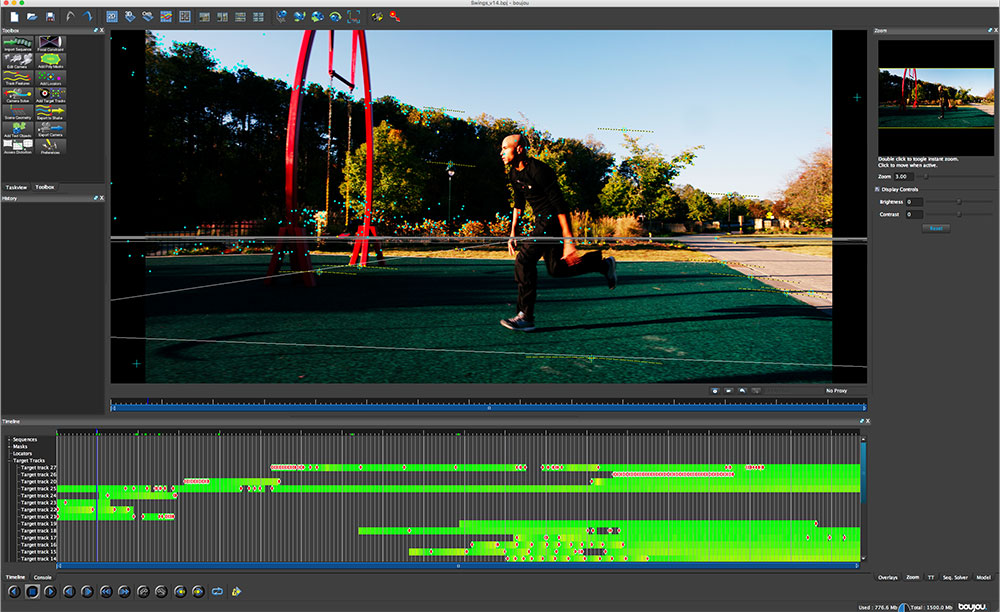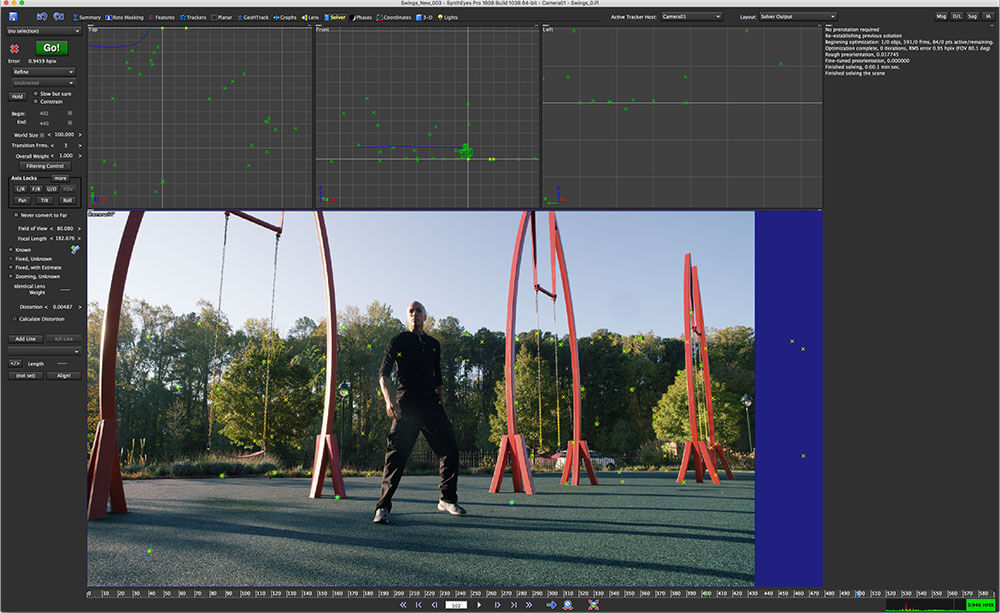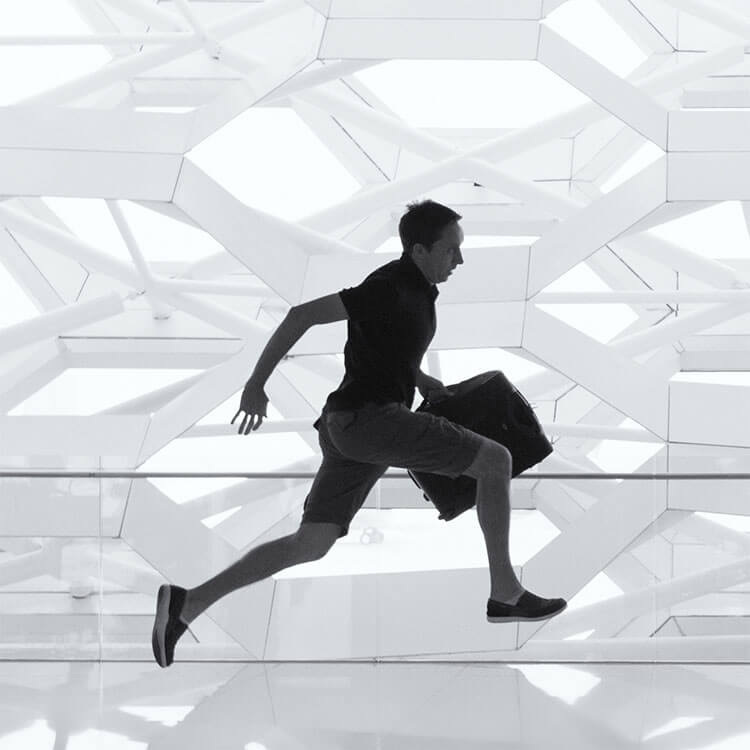These last two months have been very busy for me. A little while ago, I was tasked with motion tracking a series of green screen shots where I had to add a digital environment behind actors while matching the camera movement, as described in my last blog post. Lots of hair was pulled in the process but the hair loss was worth it in the end. For those who don’t know what motion tracking is, I suggest checking out that blog entry for a closer look. I decided to delve further into motion tracking software, and learned two different applications, to see which would give the results I liked.
Motion tracking and math
For a brief overview, motion tracking is following patterns in a shot and then converting them into a 3D scene using complex math. It’s great for adding digital elements to a scene. For example, pick any Marvel movie. Every time a digital character or effect is on screen, it has to be placed in a 3D scene that matches the real life shot and then integrated back into the live-action shot, so it looks like the Hulk is really standing there. This can also be used to track an actor and add digital effects, like the magic glyphs Dr. Strange uses to cast his spells.
Every software program tackles the complex calculations a little differently. Some automate most of the process, while others give the user more control. As I discovered recently, sometimes the final results, called a “camera solve,” turn out incorrect for the scene, leading me to spend days trying to fix it, when other software could give a better solution quicker. Think of it like this: we tell the software what the variables are to a complicated math formula of trigonometry and geometric projection, and it then solves the math problem. Only some software uses a different technique to solve the problem.
Boujou vs SynthEyes
There are a slew of motion tracking software options out there, such as the built-in tracking software in After Effects and Nuke, PFTrack, Voodoo, Mocha, Boujou, and SynthEyes. I was already familiar with the first two, which I used in the past as a student to do simple motion tracking, which worked well enough, but doesn’t tend to be as powerful or accurate as the stand-alone software packages. My previous blog talked about using Boujou, which was a great start, but it wasn’t giving me the results I wanted, so I learned SynthEyes.

For me personally, Boujou wanted to automate too many things and more than once resulted in an inaccurate solution, which I had a hard time fixing. SynthEyes was much easier, and had more options and tools for getting an accurate solution and adjusting it. However, it is rare to get a perfect solution the first time around. Surprisingly, I found that even though SynthEyes is cheaper, it was a better option for me.

In one shot in particular, the camera motion is very complex. We’re tracking a subject from right to left, following his fast path while slowly panning closer to him, before panning backward and changing direction, only to pan down and tilt up toward the end. Trust me, it looks cooler than it sounds. With so much going on, Boujou had a hard time keeping track of the motion in key parts of the shot, which would result in a scene where only the first half matched up. However, once I got a hang of SynthEyes, the software was able to understand the complicated movement relatively quickly and produced a much better result.
That isn’t to say Boujou is bad, or SynthEyes is better. For me, in this situation, SynthEyes won out. However it goes to show that just because you already know how to do something, it doesn’t mean you can’t benefit from learning how to do it a different way. There is always more to do and learn, and I am glad I finally got to learn how to get a good camera track in a complicated scene like this, and now know how to use two dedicated motion tracking programs. However, I don’t think I will be changing my job title to “Motion Tracker Extraordinaire” anytime soon.

